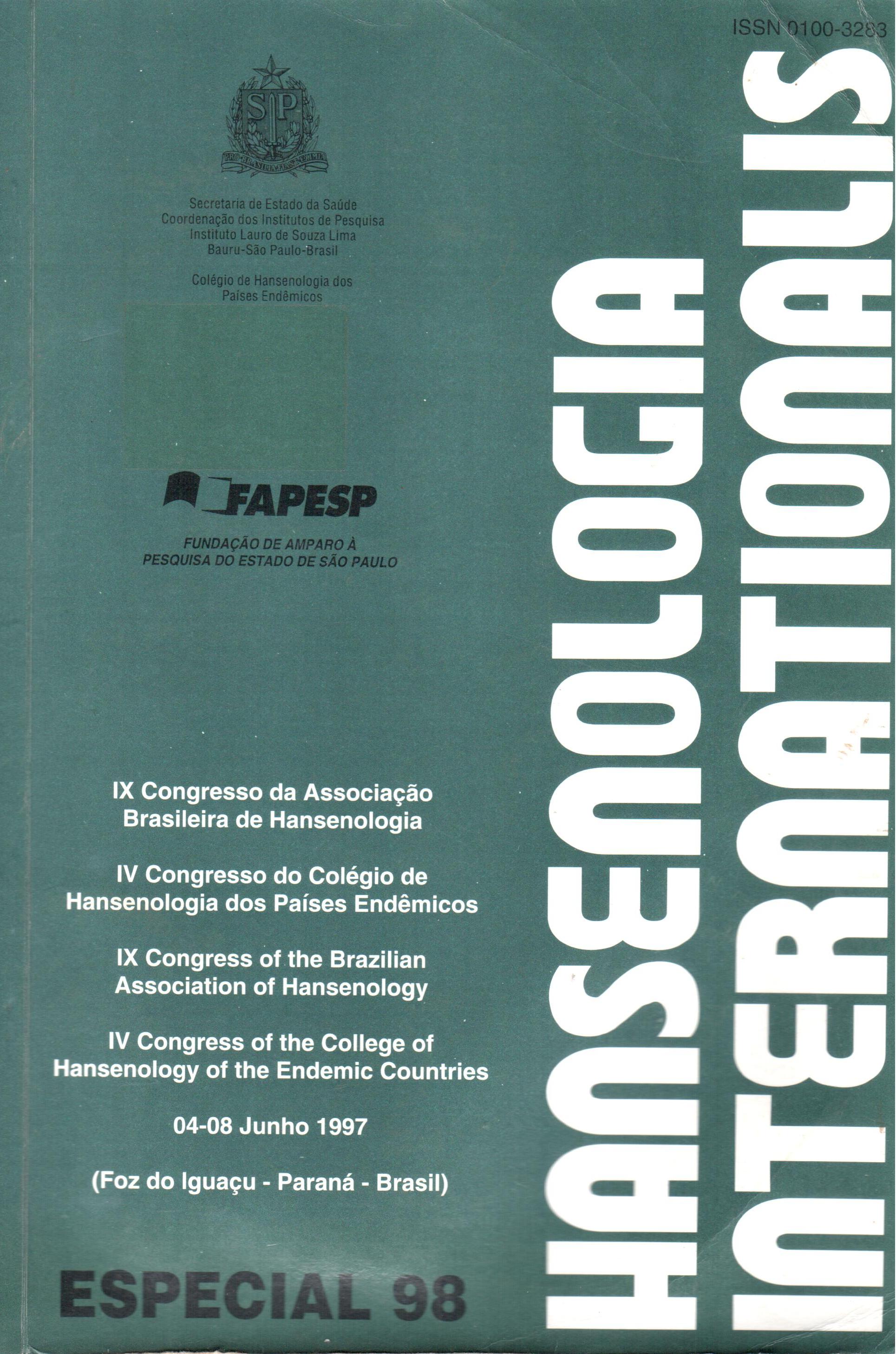Resumo
The study of the IgG subclasses of antibodies across the clinical spectrum of leprosy id not reveal differences that could be related to the Th1/Th2 dichotomy; the predominance of antibodies of the IgG1, 2 and 3 subclasses suggest a possible Th1 response across the spectrum in Venezuelan patients. In contrast, the anergic form of American cutaneous leishmaniasis was characterized by a strong IgG4 specific antibody response, suggesting a Th2 response, while localized forms of the disease appeared to be associated with responses of the Th1 type. Persisting antibodies to phenolic glyco- lipid-I in a small percentage of clinically inactive multibacillary patients may reflect differences in the catabolism of this unusual antigen, since persistence was not associated with a unique initial IgG subclass response to a complex extract of Mycobacterium leprae antigens.
Referências
2. HAMMARSTROM L. and Smith C.I.E. (1987) immunoglobulin subclass distribution of specific antibodies in allergic patients. Allergy 42, 529-534.
3. ISHIZAKA A., Sakiyama Y., Nakanishi M. et al. (1990) The inductive effect of interleukin-4 on 1904 and I gE synthesis in human peripheral blood lymphocytes. Clinical and Experimental Immunology 79, 392-396.
4. SALGAME P., Abrams J.S., Clayberger C. et al. (1991) Differing lymphokine profiles of functional subsets of human CD4 and CDB Tcell clones. Science 254, 279-282.
5. YAMAMURA M., Uyemura K., Deans R.J. et al. (1991) Defining protective responses to pathogens: cytokine profiles in leprosy lesions. Science 254, 277-279.
6. MUTIS T., Kraakman E.M., Comelisse, Y.E. et al. (1993) Analysis of cytokine production by Mycobacterium-reactive T cells. Failure to explain Mycobacterium teprae-specific nonresponsiveness of peripheral blood T cells from lepromatous leprosy patients. J. Immunol 150, 4641-4651.
7. MISRA N., Murtaza A., Walker B. of aL (1995) Cytokine profile of circulating T cells of leprosy patients reflects both indiscriminate and polarized T-helper subsets: T-helper phenotype is stable and uninfluenced by related antigens of Mycobacterium leprae. ImmunoL 86, 97-103.
8. RODRiGUEZ V., Centeno M. and Ulrich M. (1996) The IgG isotypes of specific antibodies in patients with American cutaneous leishmaniasis; relationship to the cell-mediated immune response. Parasite ImmunoL 18, 341-345, 1996.
9. ULRICH M., Rodriguez V., Centeno M. and Convit J. (1995) Differing antibody IgG isotypes in the polar forms of leprosy and cutaneous leishmaniasis characterized by antigen-specific T cell energy. Cl/n. Exp. ImmunoL 100, 54-58.
10. HEINZL F.P., Sadick M.D., Hoiaday B.J. et al. (1989) Reciprocal expression of gamma interferon or interleukin 4 during the resolution or progression of murine leishmaniasis. Evidence for expansion of distinct helper T cell subsets. J. Exp. Med. 1169, 59-72.
11. CACERES-DITTMAR G., Tapia, F.J., Sanchez MA. et al. (1993) Determination of the cytokine profile in American cutaneous leishmaniasis using the polymerase chain reaction. Clin. Exp. Immunol 91, 500-505.
Este periódico está licenciado sob uma Creative Commons Attribution 4.0 International License.
